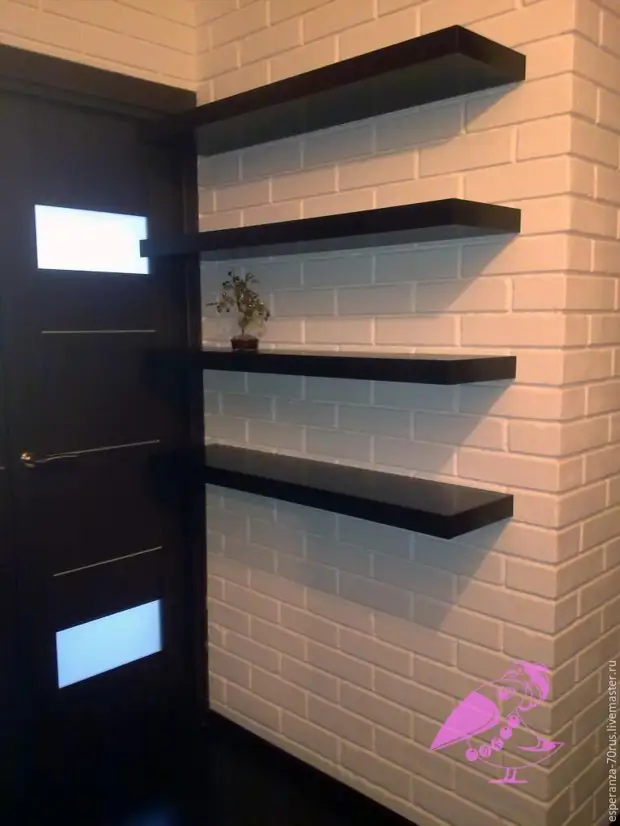
Recently, the so-called Loft style has acquired great popularity, including the open brickwork or imitation on one or more walls.
Owners of apartments in brick houses in this regard are lucky - it is enough to leave the wall as it is or to remove the plaster, but those living in panel or wooden houses should not be upset too. In this master class, I will show how, if you wish, you can simulate brick masonry on any surface with your own hands.
Immediately I will say that this process is simple, anyone will cope, but it will take a sufficient amount of time.
To work, we will need a number of instruments and devices:
- gypsum plaster;
- Capacity for kneading plaster;
- Wooden rails with a cross section of 1x1 cm, length from 1 meter or their analogue (I ordered in a joiner's workshop);
- level;
- glue gun and rods to it;
- pulverizer;
- Spatulas wide and small;
- grinding machine or bar with sandpaper (for large areas it is desirable, of course, first);
- primer;
- paint, brush, roller for staining;
- Rule, pencil.
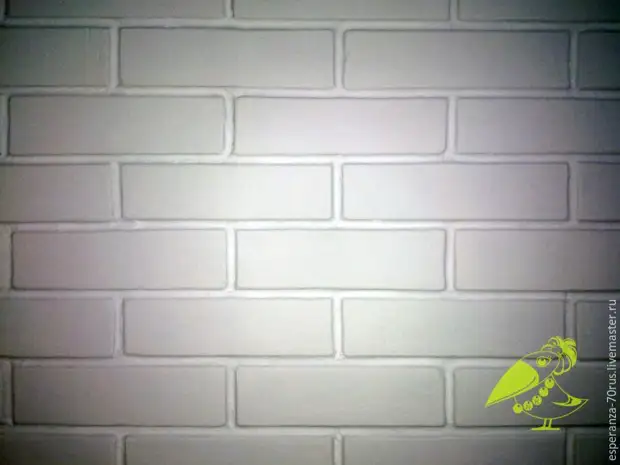
1. To begin with, we prepare the apparent surface - we remove everything that falls off or gets off. In the rest - the surface irregularities do not matter.
2. One of the wooden ridges is cut into a 6.5 cm long pars - we will need them for jumpers between bricks. Bricks themselves 25x6.5 cm (natural size).
3. With the help of a level, line and pencil, we mark the lines of the location of our bricks and glue the guides with hot glue.
Please do not pay attention to the plaster mesh on the wall. It was the first experience, and the decision to make brickwork on the grid was erroneous. With our thickness of plaster, the grid, in principle, is not needed. This was confirmed in practice experience number 2.
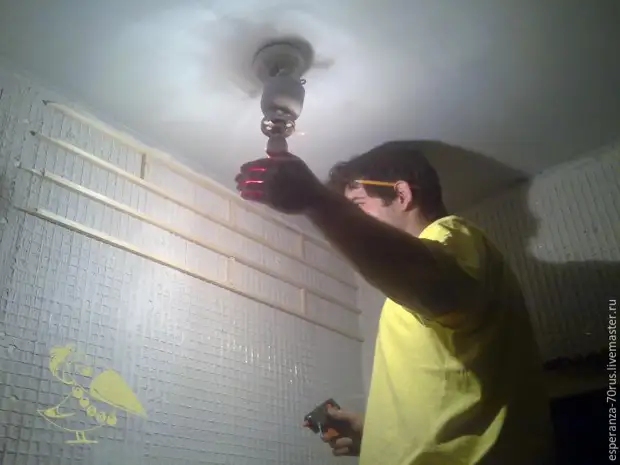
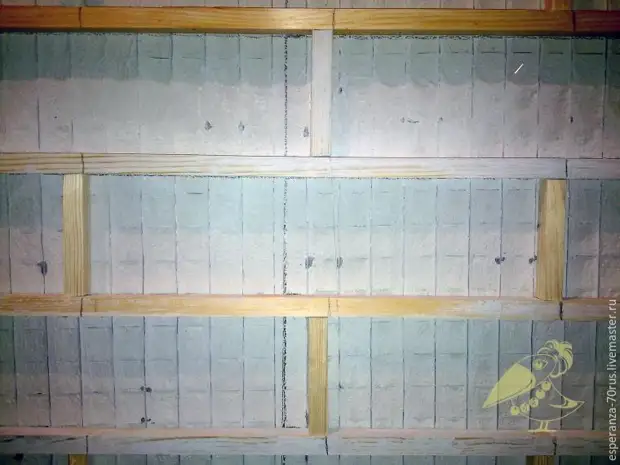
4. We divorce plaster, wrapped the wall and throw the plaster. Do it need it quickly :)
Align the big spatula on the guides.
I enjoy the gypsum plaster I recommend small portions, about 1 square meter at a time. Initially, you can do less, so to speak - trial.

Already painted ceiling was protected by painting scotch.
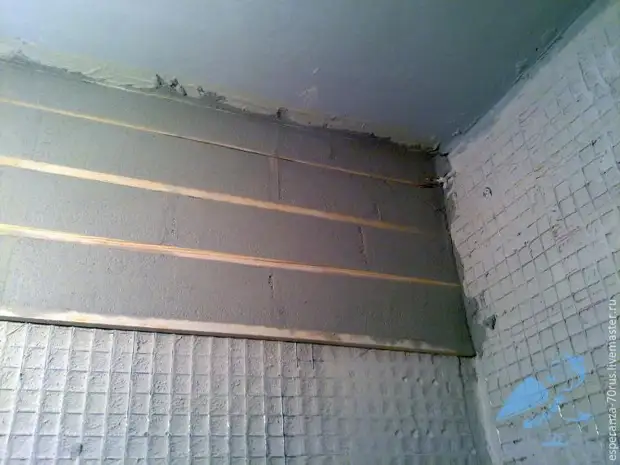
5. If we want to get a beautiful, even, "new" brick, we are waiting for about 15-20 minutes, until the plaster grabs a little, then you will withdraw the side of the spatula along all the guides, and disconnect them from the wall.
If we want a beautiful, "old" brick with chips and irregularities, we are waiting for the plaster thoroughly gets up and becomes solid, and only then we remove the guides.
I like the first option, but I plan to do chips and irregularities in some places.
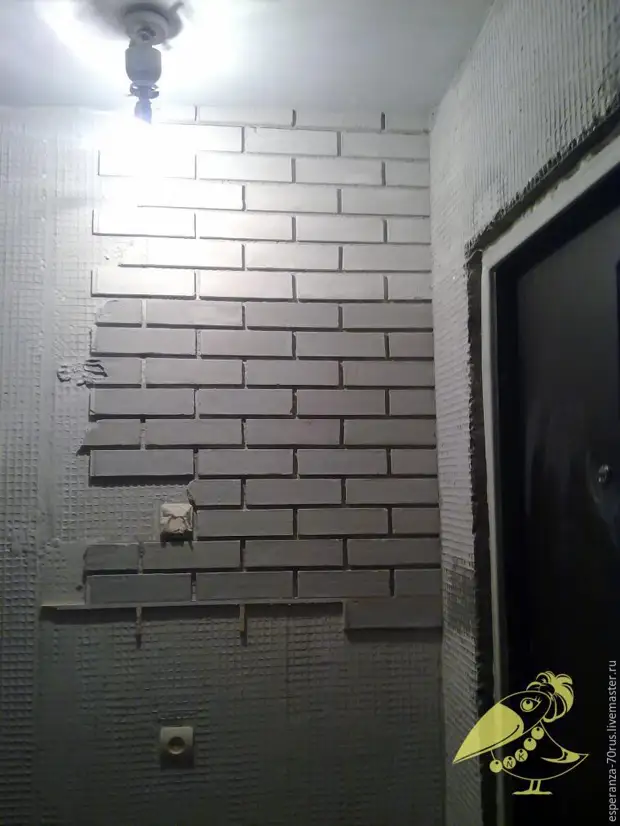
After the guides are removed, I am also manually forming a perimeter of bricks, wetting water, smoothing irregularities.
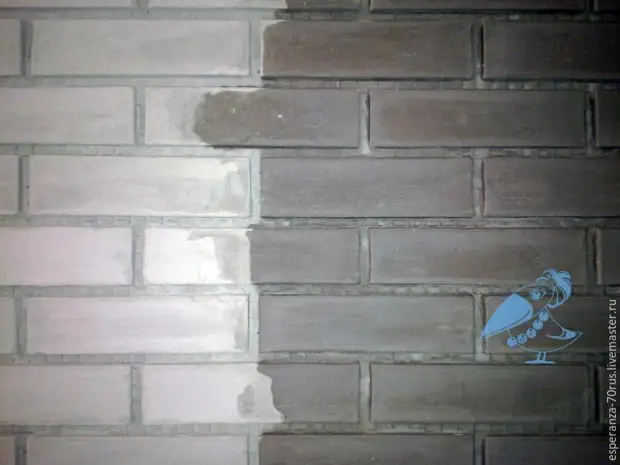
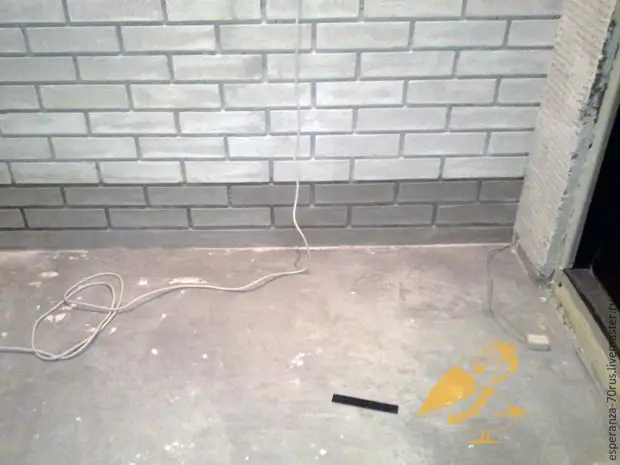
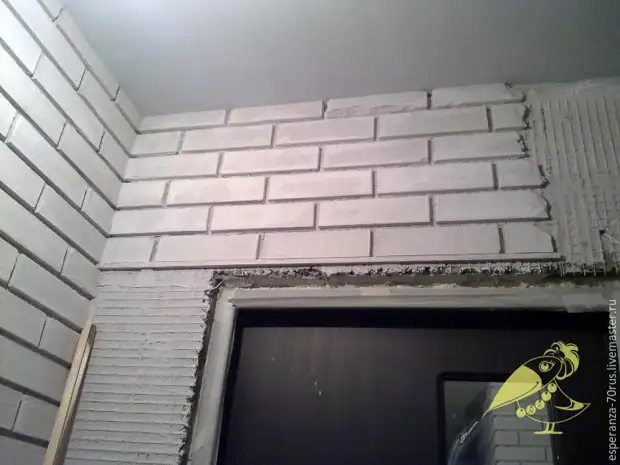
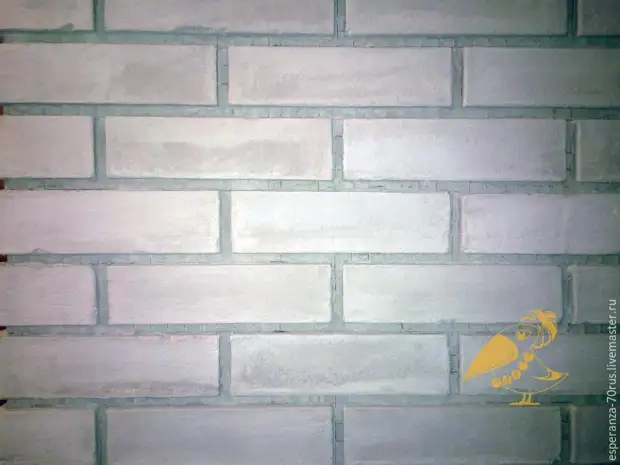
For comparison - in the photo below the guides were removed with fully dried plaster.
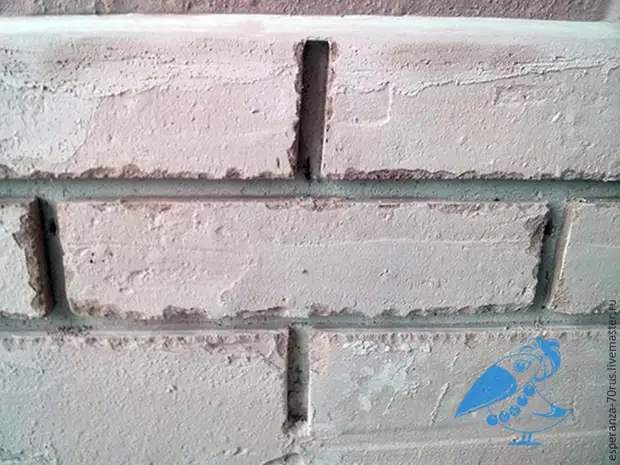
An interesting moment of finishing around the front door.
There is a small gap between the door and the wall close to the mounting foam and the discovered angle of the wall. For convenience I use a cutting of plastic cornice as a limiter.
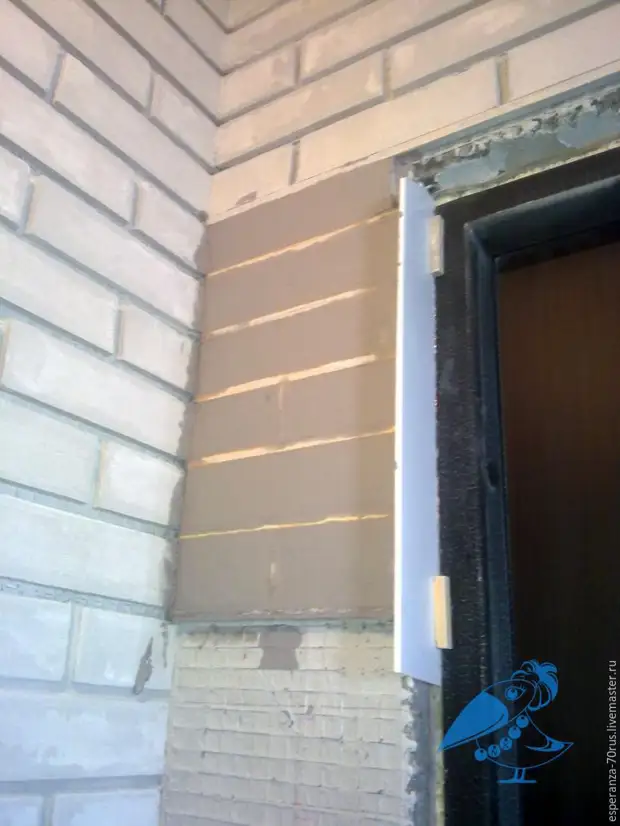
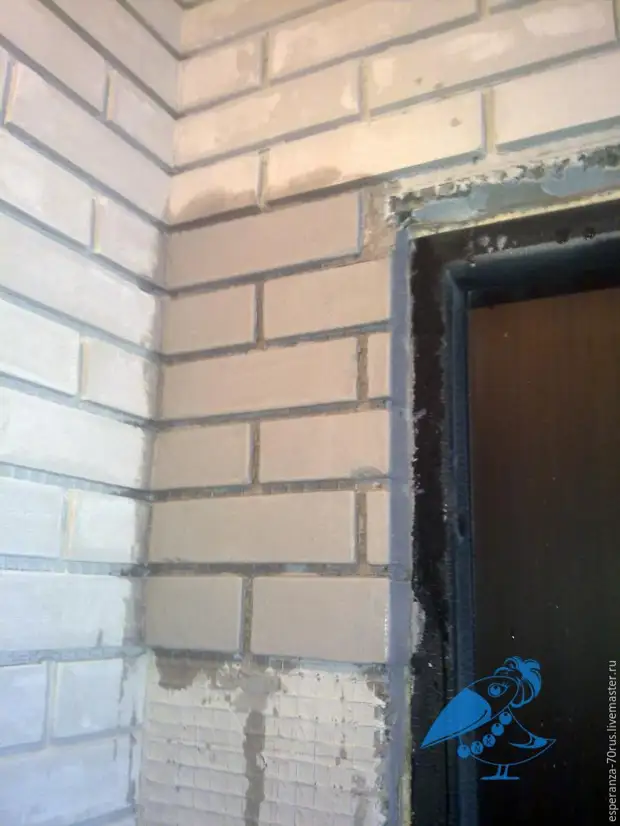
6. On a dried area, you can begin to "close the seams". This process is easier to do if we put the plaster into a dense polyethylene package, cutting into a small hole on the corner, squeeze in the seam (like confectionery cream) and smear.
7. If the result is satisfied, this item can be skipped. But I wanted to make the wall smooth. Embossing is the most unpleasant, noisy and dusty stage in this process.
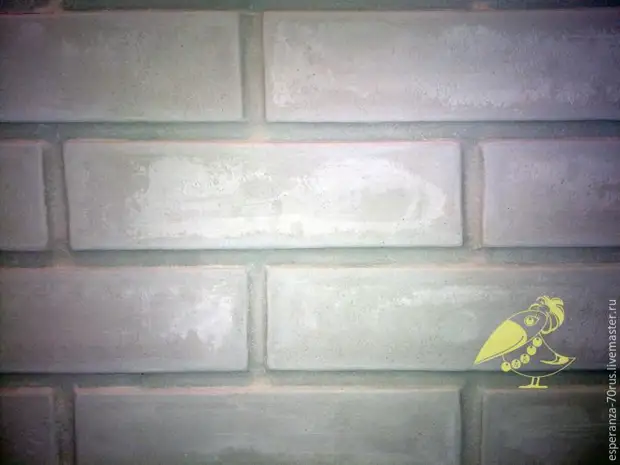
8. After the hide, it is necessary to clean the wall from dust, primed and paint. I painted interior washing paint in 2 layers.
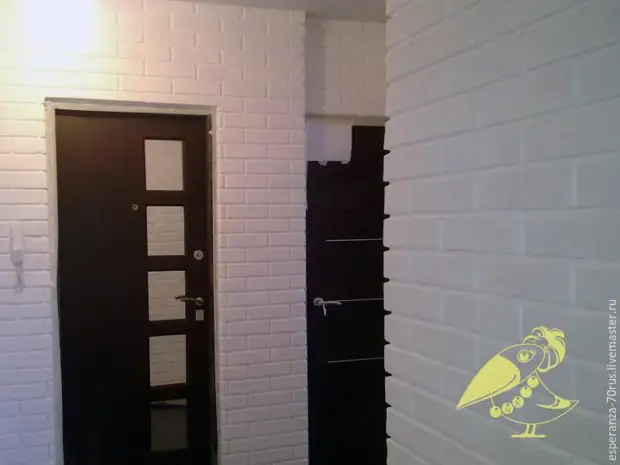
Results of the Labor:
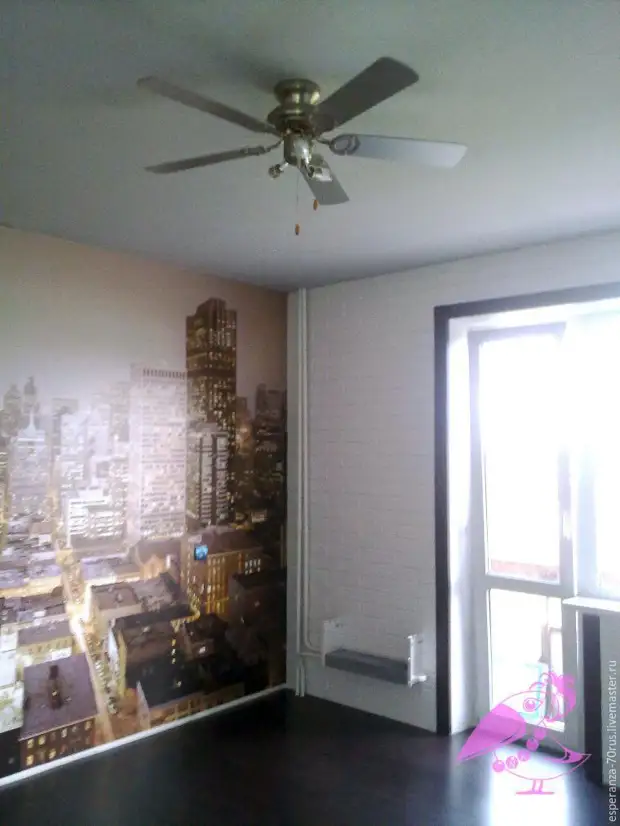
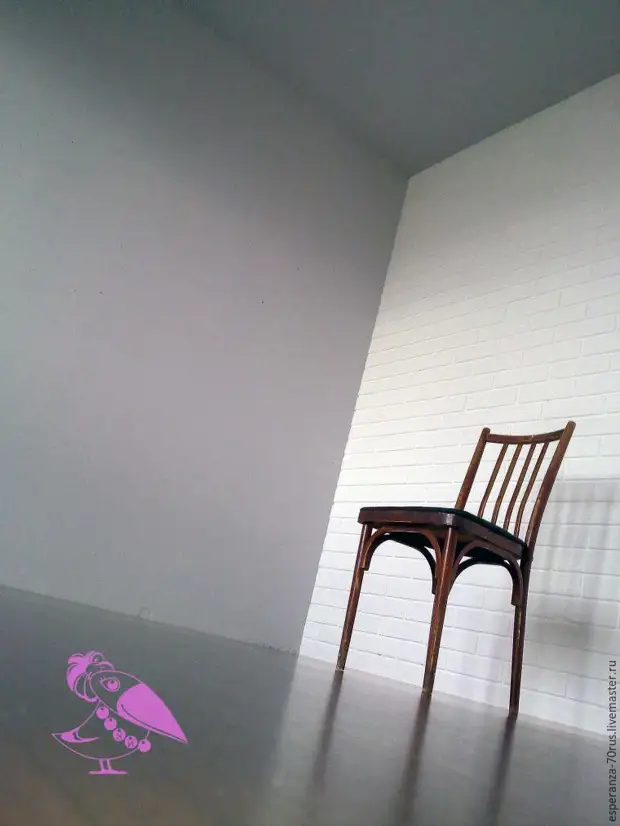
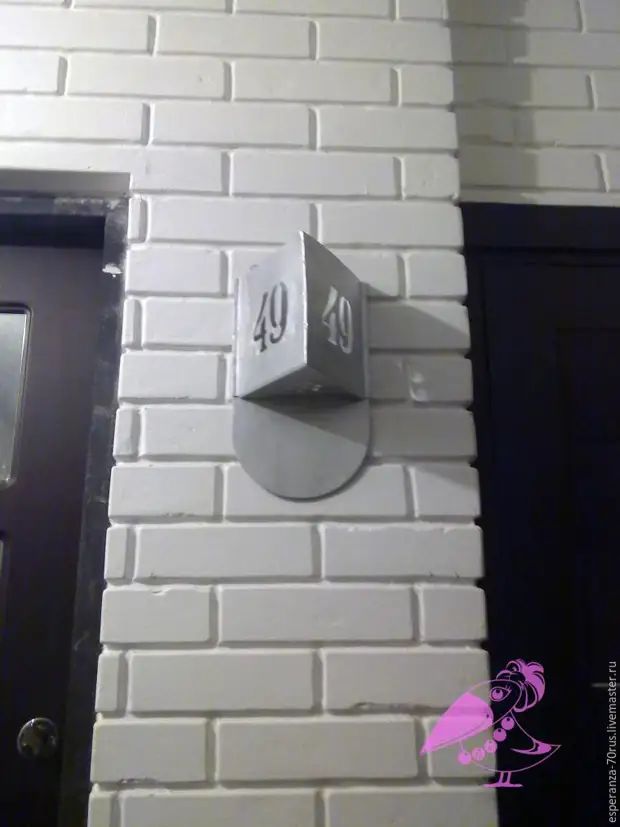
In conclusion, I want to say that the methods of imitation of brickwork are very much, so let yourself voice the positive and negative points of this method, based on our own experience of "construction and operation" (in operation for the third year).
Pros:
- falls on any surface (in my experience - a concrete wall, a septum of wood);
- the ideal evenness of the walls is not important + removes irregularities;
- the ability to choose the degree of "compilation" of the brick;
- naturalistic (many of my guests thought I live in a brick house);
- wear resistance;
- Easy to update (tinkering, repaint, undercut);
- Ecology.
Of the minuses, I can note the considerable labor intensity of this method and a large amount of dust at the repair stage. The minuses in operation have not yet been detected. There is no update the wall of the desire, as it still looks worthily and not tired.
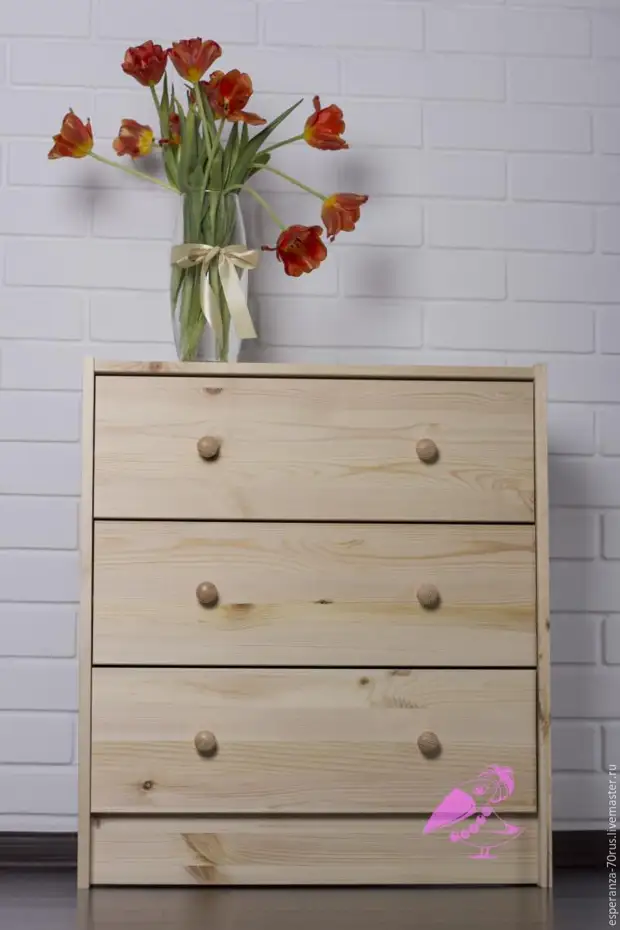
A source
